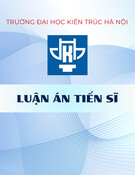
Annals of Mathematics
Random k-surfaces
By Franc¸ois Labourie

Annals of Mathematics,161 (2005), 105–140
Random k-surfaces
By Franc¸ois Labourie*
Abstract
Invariant measures for the geodesic flow on the unit tangent bundle of
a negatively curved Riemannian manifold are a basic and well-studied sub-
ject. This paper continues an investigation into a 2-dimensional analog of this
flow for a 3-manifold N. Namely, the article discusses 2-dimensional surfaces
immersed into Nwhose product of principal curvature equals a constant k
between 0 and 1, surfaces which are called k-surfaces. The “2-dimensional”
analog of the unit tangent bundle with the geodesic flow is a “space of pointed
k-surfaces”, which can be considered as the space of germs of complete
k-surfaces passing through points of N. Analogous to the 1-dimensional lam-
ination given by the geodesic flow, this space has a 2-dimensional lamination.
An earlier work [1] was concerned with some topological properties of chaotic
type of this lamination, while this present paper concentrates on ergodic prop-
erties of this object. The main result is the construction of infinitely many
mutually singular transversal measures, ergodic and of full support. The novel
feature compared with the geodesic flow is that most of the leaves have expo-
nential growth.
1. Introduction
We associated in [1] a compact space laminated by 2-dimensional leaves,
to every compact 3-manifold Nwith curvature less than -1. Considered as a
“dynamical system”, its properties generalise those of the geodesic flow.
In this introduction, I will just sketch the construction of this space, and
will be more precise in Section 2. Let k∈]0,1[. A k-surface is an immersed
surface in N, such that the product of the principal curvatures is k.IfNhas
constant curvature K,ak-surface has curvature K+k. Analytically, k-surfaces
are described by elliptic equations.
*L’auteur remercie l’Institut Universitaire de France.

106 FRANC¸ OIS LABOURIE
When dealing with ordinary differential solutions, one is led to introduce
the phase space consisting of pairs (γ, x) where γis a trajectory solution of the
O.D.E., and xisapointonγ. We recover the dynamical picture by moving x
along γ.
We can mimic this construction in our situation in which a P.D.E. replaces
the O.D.E. More precisely, we can consider the space of pairs (Σ,x) where Σ
is a k-surface, and xapointofΣ.
We proved in [4] that this construction actually makes sense. More pre-
cisely, we proved the space just described can be compactified by a space,
called the space of k-surfaces. Furthermore, the boundary is finite dimensional
and related in a simple way to the geodesic flow. This space, which we denote
by N, is laminated by 2-dimensional leaves, in particular by those obtained by
moving xalong a k-surface Σ. A lamination means that the space has a local
product structure.
The purpose of this article is to study transversal measures, ergodic and
of full support on this space of k-surfaces. At the present stage, let us just
notice that since many leaves are hyperbolic (cf. Theorem 2.4.1), one cannot
produce transversal measures by Plante’s argument. Our strategy will be to
“code” by a combinatorial model on which it will be easier to build transversal
measures.
This article is organised as follows.
2. The space of all k-surfaces. We describe more precisely the space of
k-surfaces we are going to work with, and state some of its properties
proved in [1].
3. Transversal measures. We present our main result, Theorem 3.2.1, dis-
cuss other constructions and questions, and sketch the main construction.
4. A combinatorial model. In this section, we explain a combinatorial con-
struction. Starting from configuration data, we consider “configuration
spaces”. These are spaces of mappings from QP1to a space W.We
produce invariant and ergodic measures under the action of PSL(2,Z)
by left composition.
5. Configuration data and the boundary at infinity of a hyperbolic 3-manifold.
We exhibit a combinatorial model associated to hyperbolic manifolds. In
this context, the previous Wis going to be CP1.
6. Convex surfaces and configuration data. We prove here that the combi-
natorial model constructed in the previous section actually codes for the
space of k-surfaces.
7. Conclusion. We summarise our constructions and prove our main result,
Theorem 3.2.1.

RANDOM K-SURFACES 107
I would like to thank W. Goldman for references about CP1-structures,
and R. Kenyon for discussions.
2. The space of all k-surfaces
The aim of this section is to present in a little more detail the space “of
k-surfaces” that we are going to work with.
Let Nbe a compact 3-manifold with curvature less than −1. Let k∈]0,1[
be a real number. All definitions and results are expounded in [1].
2.1. k-surfaces,tubes. If Sis an immersed surface in N, it carries several
natural metrics. By definition, the u-metric is the metric induced from the
immersion in the unit tangent bundle given by the Gauss map. We shall say
a surface is u-complete if the u-metric is complete.
Ak-surface is an immersed u-complete connected surface such that the
determinant of the shape operator (i.e. the product of the principal curvatures)
is constant and equal to k.
We described in [1] various ways to construct k-surfaces. In Section 6.3,
we summarise results of [1] which allow us to obtain k-surfaces as solutions of
an asymptotic Plateau problem.
Since k-surfaces are solutions of an elliptic problem, the germ of a
k-surface determines the k-surface. It follows that a k-surface is determined
by its image, up to coverings. More precisely, for every k-surface Simmersed
by fin N, there exists a unique k-surface Σ, the representative of S, immersed
by φ, such that for every k-surface ¯
Simmersed by ¯
fsatisfying f(S)= ¯
f(¯
S),
there exists a covering π:¯
S→Σ such that ¯
f=φ◦π.
By a slight abuse of language, the expression “k-surface” will generally
mean “representative of a k-surface”.
The tube of a geodesic is the set of normal vectors to this geodesic. It is a
2-dimensional submanifold of the unit tangent bundle.
2.2. The space of k-surfaces. The space of k-surfaces is the space of pairs
(Σ,x) where x∈Σ and Σ is either the representative of a k-surface or a tube.
We denote it by N. Alternatively, we can think of it as the space of germs
of u-complete k-surfaces, or by analytic continuation as the space of ∞-jet of
complete k-surfaces. If we denote by Jk(2,UN) the finite dimensional manifold
of k-jets of surfaces in UN,N, can be seen as a subset of the projective limit
J∞(2,UN); this point of view is interesting, but one should stress it seems
hard to detect from the germ (or the jet) if a k-surface is complete or not.
The space Ninherits a topology coming from the topology of pointed
immersed 2-manifolds in the unit tangent bundle (cf. Section 2.3 of [1]); alter-

108 FRANC¸ OIS LABOURIE
natively, this topology coincides with the topology induced by the embedding
in J∞(2,UN).
We describe now the structure of a lamination of N. First notice that
each k-surface (or tube) S0determines a leaf LS0defined by
LS0={(S0,x)/x ∈S0}.
We proved in [4] that Nis compact. Furthermore, the partition of Ninto
leaves is a lamination, i.e. admits a local product structure. Notice that Nhas
two parts:
(1) a dense set which turns out to be infinite dimensional, and which truly
consists of k-surfaces,
(2) a “boundary” consisting of the union of tubes; this “boundary” is closed,
finite dimensional, and is an S1fibre bundle over the geodesic flow.
Therefore, in some sense, Nis an extension of the geodesic flow. To enforce
this analogy, one should also notice that the 1-dimensional analogue, namely
the space of curves of curvature kin a hyperbolic surface, is precisely the
geodesic flow.
2.3. Examples of k-surfaces. In order to give a little more flesh to our
discussion, we give some examples of k-surfaces.
Equidistant surfaces to totally geodesic planes in H3.If we suppose N
is of constant curvature, or equivalently that the universal cover of Nis
H3, a surface equidistant to a geodesic plane is a k-surface. It follows the
subset of Ncorresponding to such k-surfaces (with an orientation) in N
is identified with the unit tangent bundle of the hyperbolic space UN =
S1\PSL(2,C)/π1(N). The lamination structure comes from the right action
of PSL(2,R)onS1\PSL(2,C).
Solutions to the asymptotic Plateau problem. Let Mbe a simply con-
nected negatively curved 3-manifold ∂∞M. An oriented surface Σ possesses
aMinkowski-Gauss map,NΣ, with values in the boundary at infinity, namely
the map which associates to a point, the point at infinity of the exterior normal
geodesic. Since a k-surface is locally convex, this map is a local homeomor-
phism. We define an asymptotic Plateau problem to be a couple (S, ι) such
that ιis a local homeomorphism from Sto ∂∞M.Asolution is a k-surface
Σ homeomorphic by φto S, such that φ◦ι=NΣ. For instance, an eq-
uisdistant surface, as discussed in the previous paragraph, is the solution of
the asymptotic Plateau problem given by the injection of a ”circular” disc in
∂∞H3=CP1. We proved in [1] that there exists at most one solution to a
given asymptotic problem. Furthermore many asymptotic problems admit so-
lutions, and in Section 6.3 we explain some of the results obtained in [1]. The


























